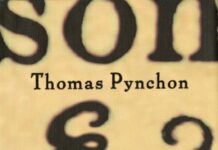
Ebook Info
- Published: 2005
- Number of pages: 544 pages
- Format: EPUB
- File Size: 0.66 MB
- Authors: Thomas Pynchon
Description
“This work may well stand as one of the very best works of the century.” —Atlantic ReviewAcclaimed writer Thomas Pynchon’s wild, macabre tale of the twentieth century and of two men—one looking for something he has lost, the other with nothing much to lose—and “V.,” the unknown woman of the title.Pynchon’s debut novel follows discharged Navy sailor Benny Profane as he reconnects with an eclectic collection of artists in New York known as the “Whole Sick Crew” along with his sidekick Pig Bodine, and the plot of Herbert Stencil, looking to find the woman he knows only as she is described in his father’s diary: “V.”Brimming with madcap characters, the novel meanders from New York to Alexandria, Cairo, Paris, Florence, and Africa, and traverses generations. Time magazine raves, “Few books haunt the waking or the sleeping mind, but this is one.”
User’s Reviews
Editorial Reviews: Review “Filled with wild humor, inventive wordplay and a darkly imaginative power.” — Philadelphia Inquirer”In this sort of book, there is no total to arrive at. Nothing makes any waking sense. But it makes a powerful, deeply disturbing dream sense. Nothing in the book seems to have been thrown in arbitrarily, merely to confuse, as is the case when inept authors work at illusion. Pynchon appears to be indulging in the fine. pre-Freudian luxury of dreams dreamt for the dreaming. The book sails with majesty through caverns measureless to man. What does it mean? Who. finally, is V.? Few books haunt the waking or the sleeping mind, but this is one. Who, indeed?” — Time “[A] brilliant and turbulent first novel.” — George Plimpton, New York Times Book Review”This work may well stand as one of the very best works of the century.” — Atlantic Review”[L]eaves the imagination spent and the mind reeling.” — New York Herald Tribune From the Back Cover The wild, macabre tale of the twentieth century and of two men — one looking for something he has lost, the other with nothing much to lose — and “V.,” the unknown woman of the title. About the Author Thomas Pynchon was born in 1937. His books include V, Gravity’s Rainbow, Vineland, Mason & Dixon, Against the Day, Inherent Vice, and Bleeding Edge. Excerpt. © Reprinted by permission. All rights reserved. V.By Pynchon, ThomasPerennialCopyright ©2004 Thomas PynchonAll right reserved.ISBN: 0060930217Chapter OneIn which Benny Profane,a schlemihl andhuman yo-yo,gets toan apo-cheirVChristmas Eve, 1955, Benny Profane, wearing black levis, suede jacket, sneakers and big cowboy hat, happened to pass through Norfolk, Virginia. Given to sentimental impulses, he thought he’d look in on the Sailor’s Grave, his old tin can’s tavern on East Main Street. He got there by way of the Arcade, at the East Main end of which sat an old street singer with a guitar and an empty Sterno can for donations. Out in the street a chief yeoman was trying to urinate in the gas tank of a ’54 Packard Patrician and five or six seamen apprentice were standing around giving encouragement. The old man was singing, in a fine, firm baritone:Every night is Christmas Eve on old East Main,Sailors and their sweethearts all agree.Neon signs of red and greenShine upon the friendly scene,Welcoming you in from off the sea.Santa’s bag is filled with all your dreams come true:Nickel beers that sparkle like champagne,Barmaids who all love to screw,All of them reminding you It’s Christmas Eve on old East Main.”Yay chief,” yelled a seaman deuce. Profane rounded the corner. With its usual lack of warning, East Main was on him.Since his discharge from the Navy Profane had been roadlaboring and when there wasn’t work just traveling, up and down the east coast like a yo-yo; and this had been going on for maybe a year and a half. After that long of more named pavements than he’d care to count, Profane had grown a little leery of streets, especially streets like this. They had in fact all fused into a single abstracted Street, which come the full moon he would have nightmares about. East Main, a ghetto for Drunken Sailors nobody knew what to Do With, sprang on your nerves with all the abruptness of a normal night’s dream turning to nightmare. Dog into wolf, light into twilight, emptiness into waiting presence, here were your underage Marine barfing in the street, barmaid with a ship’s propeller tattooed on each buttock, one potential berserk studying the best technique for jumping through a plate glass window (when to scream Geronimo? before or after the glass breaks?), a drunken deck ape crying back in the alley because last time the SP’s caught him like this they put him in a strait jacket. Underfoot, now and again, came vibration in the sidewalk from an SP streetlights away, beating out a Hey Rube with his night stick; overhead, turning everybody’s face green and ugly, shone mercury-vapor lamps, receding in an asymmetric V to the east where it’s dark and there are no more bars.Arriving at the Sailor’s Grave, Profane found a small fight in progress between sailors and jarheads. He stood in the doorway a moment watching; then realizing he had one foot in the Grave anyway, dived out of the way of the fight and lay more or less doggo near the brass rail.”Why can’t man live in peace with his fellow man,” wondered a voice behind Profane’s left ear. It was Beatrice the barmaid, sweetheart of DesDiv 22, not to mention Profane’s old ship, the destroyer U.S.S. Scaffold. “Benny,” she cried. They became tender, meeting again after so long. Profane began to draw in the sawdust hearts, arrows through them, sea gulls carrying a banner in their beaks which read Dear Beatrice.The Scaffold-boat’s crew were absent, this tin can having got under way for the Mediterranean two evenings ago amid a storm of bitching from the crew which was heard out in the cloudy Roads (so the yarn went) like voices off a ghost ship; heard as far away as Little Creek. Accordingly, there were a few more barmaids than usual tonight, working tables all up and down East Main. For it’s said (and not without reason) that no sooner does a ship like the Scaffold single up all lines than certain Navy wives are out of their civvies and into barmaid uniform, flexing their beer-carrying arms and practicing a hooker’s sweet smile; even as the N.O.B. band is playing Auld Lang Syne and the destroyers are blowing stacks in black flakes all over the cuckolds-to-be standing manly at attention, taking leave with me and a tiny grin.Beatrice brought beer. There was a piercing yelp from one of the back tables, she flinched, beer slopped over the edge of the glass.”God,” she said, “it’s Ploy again.” Ploy was now an engineman on the mine sweeper Impulsive and a scandal the length of East Main. He stood five feet nothing in sea boots and was always picking fights with the biggest people on the ship, knowing they would never take him seriously. Ten months ago (just before he’d transferred off the Scaffold) the Navy had decided to remove all of Ploy’s teeth. Incensed, Ploy managed to punch his way through a chief corpsman and two dental officers before it was decided he was in earnest about keeping his teeth. “But think,” the officers shouted, trying not to laugh, fending off his tiny fists: “root canal work, gum abscesses. . . .” “No,” screamed Ploy. They finally had to hit him in the bicep with a Pentothal injection. On waking up, Ploy saw apocalypse, screamed lengthy obscenities. For two months he roamed ghastly around the Scaffold…Continues…Excerpted from V.by Pynchon, Thomas Copyright ©2004 by Thomas Pynchon. Excerpted by permission. All rights reserved. No part of this excerpt may be reproduced or reprinted without permission in writing from the publisher.Excerpts are provided by Dial-A-Book Inc. solely for the personal use of visitors to this web site. Read more
Reviews from Amazon users which were colected at the time this book was published on the website:
⭐I finally got back to finishing this book. I think I started it twenty years ago, was overwhelmed by it, and just dropped it. So this time, I started from the beginning and tried again – much better experience, as it might have taken me only about one and a half months to finish. Anyway, it’s a great book. I would give the book 4.5 stars if Amazon would let me, not because it isn’t a 5 star book, but because I have decided to rate Pynchon books relative only to themselves. I just happen to think that Masonn and Dixon is Pynchon’s greatest.Tthis book focuses on two main characters in Benny Profane and Herbert Stencil. Profane just kind of goes with the flow, while Stencil is in search of the mysterious woman known as V. Now, you’d have to be completely non-Pynchon to think that V is as simple as being just a woman that Stencil searches for – his whole identity counts on her (spoiler or not, I don’t know, sorry if it is). These characters are wonderfully explored, Profane more from his emotional standpoint and Stencil from a driven perspective (he is, after all, searching for answers). Along the way, Profane and Stencil inhabit close proximity, but their stories don’t merge until near the end of the book. Overall, I think the dichotomy offered by these two characters is the central theme of this book.The story…Basically, this story is about the two men mentioned above – Profane and Stencil. However, it manages to tell the stories of the two characters in parallel, since the characters don’t interact until late in the book. Profane’s life is pretty simple and non-committal, simply going with the flow. Stencil has studied many different documents to try to determine his mother’s identity as well as, to some extent, his own. Stencil knows his father, but was very young when he last saw him, and he knows nothing of his mother.The chapters are evenly distributed among those devoted to Profane, and those of Stencil.In the end, I think the novel tied up strings fairly well – I pretty much felt closure with all the main characters. Stencil’s story saddened me the most, while I think Profane’s ended as expected. Along the way, Pynchon displays his talents for visually describing a scene (the best of anyone I’ve read – when I remember his novels, I do so visually), social commentary, technical and historical knowledge, and a variety other things. That this is the first novel of anyone seems hard to believe.To people who have a hard time with Pynchon, and I guess that means pretty much everyone, I have this advice – read it with someone. My fiance’ and I read this book at the same time (not at the exact same time, but at the same pace), and we were able to discuss each chapter and, together, we were able to understand the book quite well (I think). She’s not exactly a Pynchon fan, but she was willing to make the sacrifice for my benefit. While she liked the novel (4 out of 5 from her), and she recognizes Pynchon’s skill as a writer, she felt that some of the stories dragged and also felt that some didn’t have a real connection to the rest of the book (the end of one chapter seems to simply list disasters in August of 1956 – anyone who wants to comment to clarify is quite welcomed to do so).As with any other Pynchon book, I have felt a strong connection with the main characters, and I truly was sad to have to end the book. I believe that the meaning of entropy was most clearly explored here – Profane goes on and on almost as time does. Socially, every sequence seems to end in chaos or decay. To me, these were themes that I could grasp, but not in Pynchon’s later works, and I think that I need this book to help me understand those later books. About 21 years ago, I read Gravity’s Rainbow and I hardly understood it – there is no doubt that I will reread that one, but I have to convince my fiance’ to read it with me (she’ll be my wife by then).
⭐Pynchon creates three overlapping worlds in V. The first features Benny Profane, a beer-bellied slacker in the mid 1950’s, who stays in touch with his navy buddies while he lives in Manhattan, hunts alligators in the sewers, and drinks heavily with a young intellectual crowd that talks only in proper nouns. His second world features Sidney Stencil, a British spy who vanished in 1919, and his son Herbert, who was born in 1901 and relentlessly seeks the story of his father’s death. The Pynch’s third world is articulated most clearly by Fausto Maijstral, a poet born in 1919 who tells stories of love and guilt in a long lyrical letter (and confession) to his daughter.At some point, each of these characters is affected by Victoria Wren, a British woman (born in 1880) who is drawn to espionage, sadomasochistic sex, and sexual fetishes. While their connections to Victoria–that is, V.–range from comical and weird (Benny sees her mad influence in the sewers) to profound (Fausto witnesses her death), V. has the greatest effect on the intensely imaginative Herbert Stencil, who has dedicated his life to learning about V. and her interaction with his father. This search for V. is the heartbeat in Pynchon’s book.In writing V., the Pynch creates a sharp contrast between the slacker world of Benny Profane and imaginative worlds of the Stencils and the poet Maijstral. In making this contrast, Pynchon shows a world of superficial and arbitrary affiliation for Benny, which is a not-inaccurate rendering of life for people living extended adolescences. (Believe me; I know.) Meanwhile, the worlds of the Stencils and Maijstral are beautiful, deep, and subtle, although the practical Sidney Stencil, a spy, is focused on finding the pattern in events that may or may not threaten British interests. Regardless, the many chapters featuring the perspectives of these characters are fascinating and show great imaginative power.At the same time, Pynchon threads all his chapters with a single theme: inanimate objects and their capacity to enter our imaginations. At times, the effects of the inanimate in V. are harmless and familiar. The character Rachel, for example, is enamored with her sports car. At other times, the imaginative power of inanimate objects warps the mind, with V. finding self-destructive uses for cosmetic surgery and prosthetics. This fascination with inanimate objects also leads to what is another’s character’s suicide or murder. Only Benny is immune from this power.V. is Pynchon’s first novel. But is it the best place to start reading the fiction of this truly talented writer? Well, many Pynchoneers will disagree. But, I’d start with
⭐, where the Pynch’s playfulness, mastery of form, concern with family, and awareness of the dark side are easily accessible, as well as sometimes hilarious. Next, I’d try
⭐, which, in my reading, weaves together 78 short stories, many of them masterworks, creating a narrative about a meaningful friendship (and everything else). Then, I’d read the books on whim, using
⭐, Pynchon’s mystery featuring a doper PI, as a change of pace. You can’t miss with any of these novels (although I must say that Pynchon makes more of his slacker characters in his later books).Regardless, V., which published in 1963, remains completely fresh and imaginatively engaging and is highly recommended.
⭐Look, I get what Pynchon was trying to do, but that doesn’t mean it was done well, or that it succeeded most of the time. That said, the writing is beautiful, even if overly complicated. A lot of the references in the book are historical, but not necessarily major history. So, for most, I would guess, they can seem like nonsense. (And NO!, I don’t want to have to read a wiki to understand what they mean.) There are a lot characters in the story (though nowhere near what Gravity’s Rainbow has in it) and their stories do eventually get pulled together somewhat. Maybe that’s my biggest problem with the book: I expected more of the ending, for the stories to intersect and show how the two threads are related.All of those complaints aside, I loved the writing and the characters. The bits of history I was familiar with were wonderfully worked into the story.
⭐Pynchon’s imagination and style are unique.It’s not a book you can read through just once for the ‘story’ – you’ll need a few times to get the best of it. It has a few hallmarks of a first novel, not least the desire to throw all the tricks and techniques into the mix even if they don’t serve the whole. There’s a lot of showing off, but that’s largely acceptable because Pynchon has the talent to do it. I read this more as an encyclopaedia of literary brilliance than a novel. His later books like Inherent Vice and Bleeding Edge have more narrative control and more consistency, but this one is just totally crazy.
⭐I wouldn’t even use the pages of this book as toilet paper. The print is awful as well. Shameful display.
⭐Gave up after 20 pages. Just wasn’t for me I’m afraid.
⭐I’ve read V as part of my retirement project to discover literature 50 years after a first-year university English literature course convinced me that the novels of William Faulkner were beyond my capability. For years, I had heard the term “Pynchonesque” used and thought that I had a vague understanding of the term. I had bought a paperback copy of ‘Gravity’s Rainbow” back in the 70s just after it first came out. I did not know anything about Pynchon and did not know what I was getting into with the novel. It was not a happy meeting between Pynchon and me with that book. It further confirmed my experience with Faulkner’s novels and my capability of appreciating literature. Fortunately for me, my semiretirement has offered me the opportunity to re-approach literature and I have found that not only am I capable of appreciating Faulkner, at least to some extent, but that I thoroughly enjoy reading his novels and I have read all of them. I also attempted “Gravity’s Rainbow” again and found that quite rewarding.Given all of that I took up “V” as another step in my attempt to appreciate Pynchon and understand the term “Pynchonesque”. Overall, I found it enlightening and enjoyable but not the novel that ‘Gravity’s Rainbow” is. For me, “V” is a novel in which the idea of a sense of purpose and a sense of meaning for one’s life is explored. Benny Profane and Herbert stencil are two major characters. They are presented as living in the 1950s which is the present time of when the novel was written and published. They are presented as complementary characters within the direction of the book. Stencil is obsessed and diligent in pursuit of a goal. The goal of finding the “V.” who or which was a focus of his father’s journals. Profane describes himself as a schlemiel and a schlimazel that is a feckless character who drifts through life and accepts the bad consequences of his lack of ambition. The novel provides two endings with the use of an epilogue. Both endings provide a sense of futility. In the novel, Profane continues drifting and Stencil continues a quest that will never be successful. In the epilogue, Stencil’s father finds “V” and finds and insane woman.
⭐La primera inducción a Pynchon y sin temor a equivocarme de los mejores trabajos, la traducción es regular, pero es una novela preciosa.
⭐
Keywords
Free Download V. (Perennial Classics) in EPUB format
V. (Perennial Classics) EPUB Free Download
Download V. (Perennial Classics) 2005 EPUB Free
V. (Perennial Classics) 2005 EPUB Free Download
Download V. (Perennial Classics) EPUB
Free Download Ebook V. (Perennial Classics)



